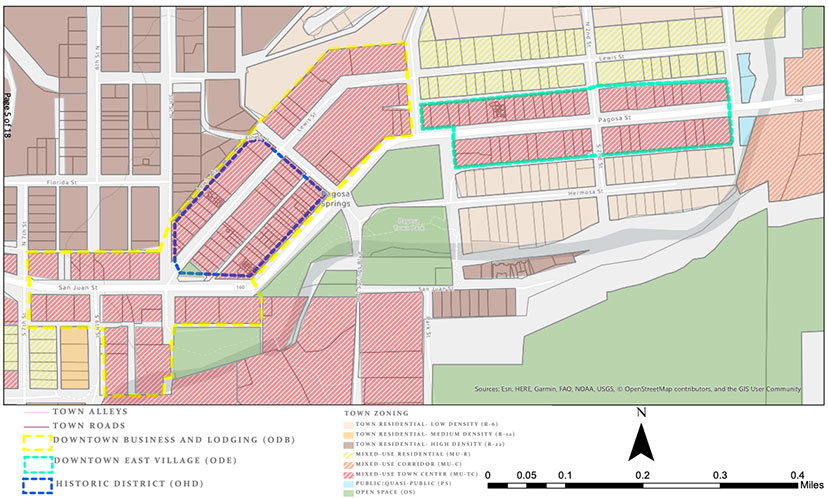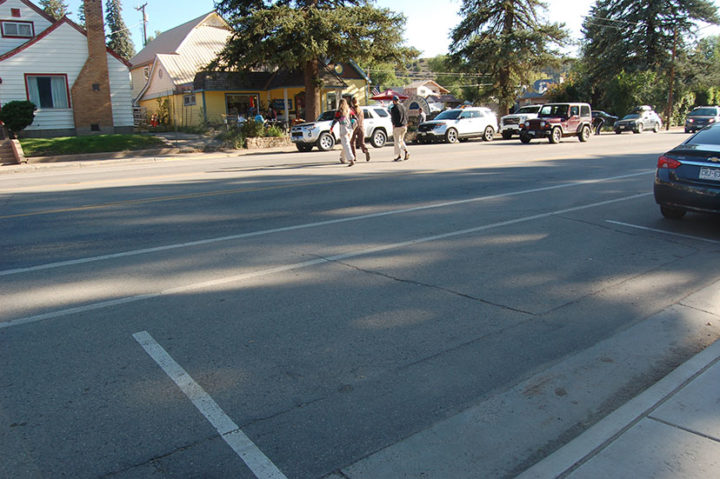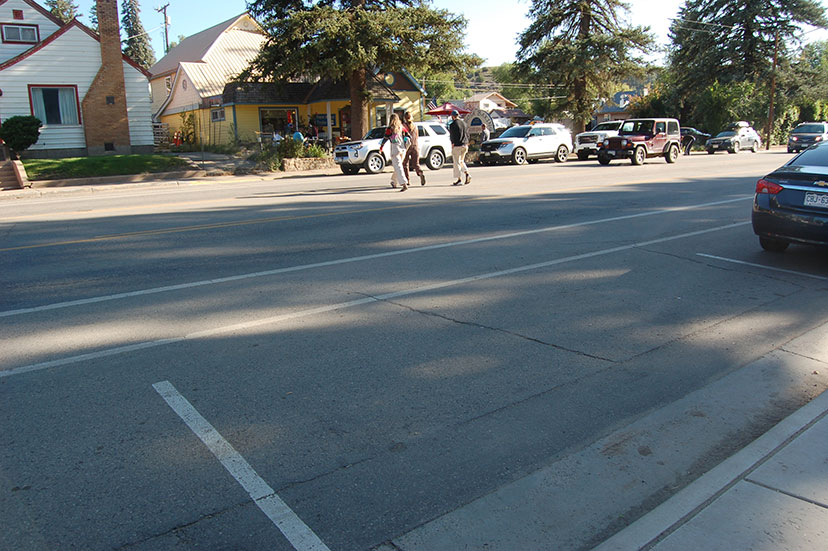About two months ago, the Town of Pagosa Springs convened a meeting of its Town Planning Commission to discuss changes to the Land Use and Development Code (LUDC), specifically regarding parking requirements. Part of the evening’s discussion involved a summary of a survey conducted by the Planning Department staff, wherein the general public was asked to express opinions on rather complex policy issues that even Planning Department staff (and government-beat news reporters) don’t fully understand.
But life is a big experiment. You try stuff, and see if it works…
These parking issues have been under discussion since before I began editing the Daily Post in 2004, and the various regulations that have been imposed on the downtown district, between then and now, have often been borrowed from other cities and towns struggling with the same issues. Other cities and towns that were also experimenting.
Where should we park the vehicles, in a quaint small town where the streets and neighborhoods were originally designed, in the 1880s, for walking and horse-drawn wagons… but which has now become heavily dependent upon Chevy Suburbans and F-350 Super Duty trucks and 33-foot RVs from Texas and Oklahoma?
Who should pay for those parking spots?
Tomorrow, Tuesday September 7, the Town Council will consider the second reading of Ordinance 957.
AN ORDINANCE OF THE TOWN OF PAGOSA SPRINGS AMENDING CHAPTER 21 OF THE PAGOSA SPRINGS MUNICIPAL CODE REGARDING PARKING STANDARDS WITHIN THE ODB AND ODE OVERLAY DISTRICTS.
The first reading, on August 19, nearly failed to generate enough votes for approval.
The basic idea behind the ordinance is to prevent downtown Pagosa from becoming infested with government-mandated parking lots,in the same way that the uptown commercial areas have been infested. The current LUDC requires new commercial buildings, or expanding commercial buildings, to provide a minimum number of customer dedicated parking spaces onsite on their parcel… or nearby, on a separate dedicated parcel… with the minimums based upon various land uses and building sizes.
But the Town Council has also expressed — consistently, over the past couple of decades — a desire to make the historic downtown more bicycle- and pedestrian-friendly. Millions of dollars have been spent, during that time, on paved walking trails and sidewalks in the downtown area. Crosswalk improvements have been put in place. Bike racks have been installed in convenient locations.
Unfortunately, those efforts have not put a dent in the amount of vehicles traffic on the community’s main streets and roads. This summer, even business owners who depend upon tourism were complaining to the Council about the amount of traffic on Highway 160.
During the first reading of Ordinance 957, no clear consensus was apparent. In fact, we heard motions made both to accept the ordinance and to deny the ordinance. That is to say, the Council expressed concerns on both sides of the issue.
If we leave the current parking regulations in place, we are likely to destroy the “character” of our quaint downtown district.
If we remove the current parking regulations, and if existing vacant parcels are someday developed, we might end up with a shortage of downtown parking.
The Town Planning Commission has been looking these same arguments — off and on, for at least two years, and from both sides of the street, so to speak. Finally, on July 27, the Commission came up with a unanimous recommendation.
“A recommendation for Town Council to approve the elimination of onsite parking requirements for commercial development with the exception of residential uses and lodging uses within the Downtown East Overlay District, Downtown Business and Lodging Overlay and District and Downtown Historic Business Overlay District, and that new development shall provide parking along their alley frontage equal to a minimum of 1 space per 10 linear feet of frontage; in addition, recommended Town Council to direct staff to minimize curb cuts along the 160 frontage and engage in professional services for a parking master plan for the downtown area”.

This was a rather drastic recommendation, comparing it with the existing LUDC requirements for downtown.
The street frontage for parcels in downtown Pagosa typically measures 50 feet, though many are twice that size: 100 feet. The measurement is typically the same on the alley side of the parcel. According to the proposed LUDC change, a new 4,000 square foot restaurant, for example, that occupies typical downtown parcel — 7,260 square feet, with 50 feet of alley frontage — would be required to include 5 parking spots along the alley. That would occupy about 80 square feet… less than 2% of the parcel.
Under the existing LUDC rules, that same 4,000 square foot restaurant would have to build a parking lot to accommodate 16 vehicles. Because of the required access lanes, the parking lot would take up half the parcel, which means it would be physically impossible to build a 4,000 square foot restaurant, unless it were two stories tall. Even then, it would be quite a challenge to make it fit, allowing for setbacks, landscaping requirements, and such.
Town Planning Director James Dickhoff explained the Planning Commission’s rationale to the Council.
“There is kind of a national trend, both in big urban downtown districts, but also small downtowns, in really looking to make sure we are not over-requiring too much paving in our downtown districts. We really want to make sure that they are vibrant; there is multi-modal transportation, infrastructure installed for cyclists and pedestrians, and less concentration on vehicles…”
We note that the proposed reduction in parking applies only to commercial development. The minimums for residential and lodging properties would remain the same.
I’ve spent nearly all of the past 23 years living within easy bicycling distance of the ‘ODB” and ‘OED’ zoning districts — historically, a mixed-use commercial-residential district, from which the ‘residential’ uses have been slowly disappearing.
I cannot recall a time, during those 23 years, when I had to park my car more than half a block from a business I was visiting. More typically, I have been able to park directly in front of the business. And Planning Director James Dickhoff told the Town Council, on August 19, that his department had confirmed that same generous availability, when surveying the parking situation downtown — with most areas only 50% full during most parts of the day.

I suppose, if downtown parking had been consistently problematic, I would probably have made more use of my bicycle. Instead, my bicycle tends to gather cobwebs.
As mentioned, the five Council members who discussed Ordinance 957 on August 19 struggled to reach agreement.

